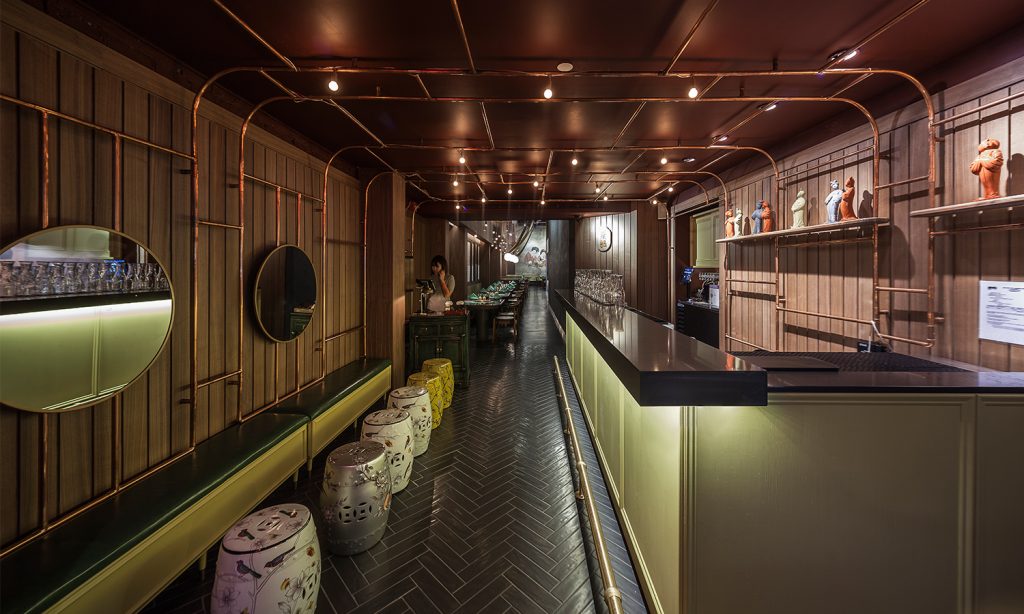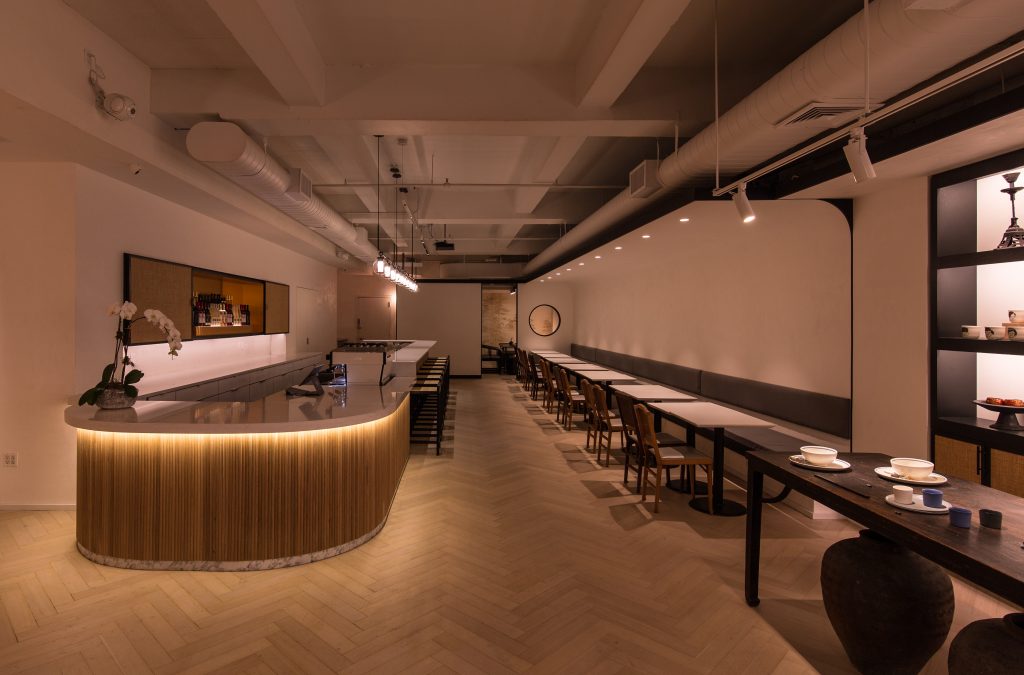Interior Design Studio New Practice’s Comprehensive Multicultural Approach
Founding partner Nianlai Zhong explains how to subvert stereotypes through design

If you pay any attention to the never-ending list of New York City restaurant openings, you’ll see that only a small percent look beyond cuisine and take into account beautiful design, strong branding and distinguishable personality. Design studio New Practice, helmed by founding partner Nianlai Zhong, excels at the creation of an environment that complements a meal. Their list of projects reflects this, including East Village noodle spot Hunan Slurp, tea purveyor Sage Collective, and Chinese dining destination Hao Noodle and Tea West Village.

As the studio practices in both Shanghai and New York, it’s able to bridge the gap between cities, nations, and cultures. Rather than playing into Chinese design stereotypes, Zhong—alongside a team of diverse thinkers, architects, city planners and others—actively works to subvert them with a subtlety that reveals itself as you dig deeper into their spaces.

“The richness of Chinese aesthetics obviously offers us a lot of inspiration, as you can see in our project Sage Collective, Tang Hotpot, The Tang, among others,” Zhong tells CH. “However, what’s important to us is not to be bound by a specific style or aesthetics, but to cultivate a space that can reinforce the values and concepts of a brand.”
It’s also about the font you use, the logo you see, the menu you read, the utensils you touch, even the smell and taste of the food that is served.
New Practice’s comprehensive approach comes courtesy of the team’s array of expertise. Zhong (a former professor at The Columbia University Graduate School of Architecture, Planning, and Preservation) is also a registered architect and a masters graduate from multiple universities. Joining him are an architectural designer, two project architects and a pair of partners with extensive experience in hospitality and interior design. The unique, multidisciplinary approach leads to broader design theory rather than specific style.

“This interdisciplinary mode of practice is very important to us because it helps us to discover a holistic concept and to establish a common ground with the client in the early phase of the project. The idea of ‘Branded Space’ is something we talk about a lot, and for a ‘Branded Space’ to work you are no longer only working in space, per se, it’s also about the font you use, the logo you see, the menu you read, the utensils you touch, even the smell and taste of the food that is served, but above all, the concept of the brand,” he explains.

This is a trait that separates their studio-client relationships. Above all else, the clarity of the brand’s concept reigns supreme. Nowhere within the walls of Hunan Slurp, The Tang or Sage Collective are visible nods to New Practice or overt attempts at advertising their work. If you’re made aware of their involvement, it’s only obvious in the quality of the work, rather than repetitious, recycled details.

“Our approach to different projects is quite site specific. Namely, we always try to optimize unique site conditions for a particular program. In the case of Sage Collective, for example, the existing mechanical and electrical infrastructures were important contexts we took into consideration in the early stage of the design, so as to minimize renovation scope and make sure the construction is completed within a very tight schedule,” Zhong continues.

Each space is transportive in its own right. Hunan Slurp, for instance, with its natural wood accents and delicate, underground essence, feels like stepping into a restaurant far away from NYC. The food—contemporary and colorful rice and noodle dishes—suits it perfectly.
“One of our interests in design lies in the constant questioning of the preconceived ideas about a certain type of program, or a particular typology of space. We believe that we can create something new by challenging and transforming those preconceptions, the clichés,” Zhong concludes. “In the process, we sometimes find ourselves able to uncover the layer of surprise of the old, and to establish a dialogue between the contemporary and the traditional.”
Images courtesy of New Practice












